Your body has a built-in reset button for stress, and you use it every five minutes without realizing it. When you feel overwhelmed, the common advice to “just take a deep breath” often falls short.
That’s because the secret isn’t just breathing deeper, but breathing smarter. A specific, science-backed breathing pattern called the Physiological Sigh can quickly calm your nervous system.
The Truth About Breathing and Cortisol: Why Consistency Beats “Instant” Fixes
While it’s a popular claim, no specific “30-second” breathing pattern can “instantly” shut down cortisol production. This idea misrepresents the real benefits of breathwork. Breathing exercises are a scientifically supported method for managing stress, but they are not an “off-switch.” While a single session can provide immediate calming effects, a significant, measurable reduction in overall cortisol levels requires consistent practice over time.
When you are stressed, your breathing becomes shallow and fast, activating the “fight or flight” (sympathetic) nervous system and increasing stress hormones. Controlled, deep breathing does the opposite: it activates the “relaxation response” (parasympathetic) nervous system. This process slows your heart rate, lowers blood pressure, and helps reduce the level of stress hormones in your blood.
Instead of an instant fix, focus on building resilience through consistent practice of proven techniques. Effective methods include Box Breathing (inhaling, holding, exhaling. And holding for a 4-count each), 4-7-8 Breathing (inhaling for 4, holding for 7, exhaling for 8), and Diaphragmatic (Belly) Breathing. These practices help calm the nervous system and contribute to lower overall cortisol levels as part of a regular routine.
Feeling Stressed? Here’s a Simple Trick That Works
Conquer Stress in Seconds
83% of U.S. workers say they suffer from work-related stress.
An Animated Guide to the Physiological Sigh
- Inhale Deeply: Take a full, deep breath in through your nose.
- Inhale Again: Before you exhale, take another short, sharp inhale to fully expand your lungs.
- Exhale Slowly: Let out a long, complete exhale through your mouth, longer than your inhale.
Why This Works
This “double inhale” pops open tiny, collapsed air sacs in your lungs (alveoli). This allows your body to expel carbon dioxide (CO2) more efficiently and signals your nervous system to “stand down,” rapidly reducing feelings of stress and anxiety.

The world is a stressful place. Many people worry about the future and the economy. At work, it can feel even more intense, with most workers saying they feel stressed on the job. All this pressure can make you feel overwhelmed.
When you’re stressed, people often say, “just take a deep breath.” That can help, but it often doesn’t fix the problem. It turns out that how you breathe is much more important than just taking a deep breath.
There is a specific breathing pattern that can help you calm down very quickly. It’s called the “Physiological Sigh.” This isn’t a new wellness trend; it’s a natural reflex your body already uses to help itself. By learning to do it on purpose, you can gain quick control over your stress. This guide will show you the science behind this simple sigh and give you a clear plan to use it right away.
What Happens in Your Body When You Get Stressed?
Your Nervous System & Stress Response
Sympathetic Nervous System
“Fight-or-Flight”
Activated by stress, danger. Releases Adrenaline & Cortisol.
Increases heart rate, blood pressure, shallow breathing.
Parasympathetic Nervous System
“Rest-and-Digest”
Activated by safety, calm. Promotes recovery & relaxation.
Decreases heart rate, blood pressure, deeper breathing.
The Vagus Nerve is the superhighway of your “Rest-and-Digest” system, directly signaling calm to your brain, heart, and lungs.
The Hidden Cost of Chronic Stress
While acute stress helps us react to danger, constant stress floods your body with cortisol, leading to long-term health issues.
Heart Disease Risk
Weight Gain/Loss
Memory & Focus Issues
Digestive Problems
Sleep Disturbances
“The physiological sigh is the fastest way to get your body and mind into a calm state.”
— Dr. Andrew Huberman, Neuroscientist
To see why the physiological sigh works so well, it helps to know what stress does to your body. The human stress response is a step-by-step process run by your nervous system.
The “Fight-or-Flight” Reaction
It all starts in your brain’s threat detector. When your brain senses danger—whether it’s a real threat or just a stressful email—it sounds an alarm. This triggers your “fight-or-flight” response. Your body releases a rush of adrenaline, which makes your heart beat faster, your blood pressure rise, and your breathing become quick and shallow.
If the stress doesn’t go away, your body starts a second phase. It releases cortisol, which is your main stress hormone. The first adrenaline rush is instant, but the cortisol release is a slower, longer-lasting wave.
This is where the physiological sigh comes in. It works by quickly turning off that first “fight-or-flight” alarm. It tells your body to hit the brakes. The sigh doesn’t instantly get rid of the cortisol already in your blood, but it does tell your body to stop making more of it. This allows your body to calm down and clear the stress hormones naturally.
Why Too Much Cortisol Is a Problem
In a real emergency, cortisol is helpful. It gives you a quick burst of energy. But when you feel stressed all the time, your body is flooded with cortisol. This can disrupt almost everything your body does. Over time, too much cortisol can lead to serious health problems, including heart disease, weight gain, digestive issues, and trouble with memory and focus.
Your Body’s Built-In “Calm Down” Button
Luckily, your body also has a built-in brake system for stress. It’s called the “rest-and-digest” system. The main part of this system is the vagus nerve, which connects your brain to your heart, lungs, and gut.
When you activate the vagus nerve, it slows your heart rate, lowers your blood pressure, and tells your body that the danger has passed. This breaks the stress cycle. When you’re stressed. Your breathing gets fast and shallow, which tells your brain you’re in danger, creating a loop of anxiety. To break this loop, you need a physical tool that can speak directly to your nervous system.
The Physiological Sigh: Your Fastest Way to Feel Calm

The physiological sigh is so effective because it uses your body’s own survival reflex to make a change. It’s a true “bio-hack” that uses your body’s own language to tell it to calm down.
Why You Sigh Without Thinking
Sighing is not just for when you’re sad or tired. It’s a basic reflex that keeps your lungs working properly. Your lungs are filled with about 500 million tiny air sacs called alveoli. During normal, shallow breathing, some of these sacs can collapse. This makes it harder for your body to get oxygen.
A sigh is your body’s way of fixing this. It’s a deep breath that creates enough pressure to pop those tiny sacs back open. You naturally sigh about once every five minutes without even realizing it.
The Special Pattern: Two Inhales, One Long Exhale
The physiological sigh is designed to open your air sacs and trigger a calming response. It has two simple parts:
- The Double Inhale: First, take a deep breath in through your nose. Then, without breathing out, take a second, shorter “top-up” breath. This two-part inhale creates the most pressure possible in your lungs, making sure all the little air sacs pop back open. A single deep breath often isn’t enough to do this.
- The Extended Exhale: After the double inhale, breathe out slowly and completely through your mouth. Make the exhale as long as you comfortably can. This is the part that really triggers the relaxation response. The longer you exhale, the stronger the calming signal you send to your brain.
This technique works so well because it does two things at once. The double inhale fixes your breathing mechanics, while the long exhale directly activates your body’s calming system.
How a Sigh Resets Your Brain and Body
The physiological sigh triggers a quick reset in your body. When the air sacs in your lungs reinflate, you can get rid of a lot of carbon dioxide (CO2) very quickly. Your brainstem is very sensitive to CO2 levels, and a rapid drop in CO2 is a strong signal that you are safe. This immediately tells your “fight-or-flight” system to stand down.
At the same time, the long exhale stimulates the vagus nerve. This is the most direct way to activate your “rest-and-digest” system. The result is a fast drop in your heart rate and blood pressure, and a feeling of calm that spreads through your body.
What a Stanford Study Found

The power of the physiological sigh has been proven by science. A 2023 study from Stanford University showed that it is one of the most effective ways to reduce stress.
Putting Breathing Methods to the Test
Researchers had a group of people try different five-minute exercises every day for a month. The groups were:
- Physiological Sighing
- Box Breathing (inhale, hold, exhale, hold for equal counts)
- A breathing exercise focused on fast inhales
- Mindfulness meditation
The scientists tracked everyone’s mood, anxiety levels, and physical signs of stress, like breathing rate and heart rate.
The Physiological Sigh Was the Winner
The results were very clear. While all the methods helped reduce anxiety, the breathing exercises were better at improving a person’s mood than mindfulness meditation.
The physiological sigh stood out as the most effective. The group that practiced it reported the biggest daily improvement in positive feelings, like joy and peacefulness. This good feeling grew stronger the longer they did the practice. This group also had the biggest drop in their resting breathing rate, which is a key sign of being more relaxed.
This shows that for quick stress relief, a direct physical tool like the physiological sigh can work faster and more powerfully than a mental one like meditation.
How to Use the Physiological Sigh Today

The science is great, but the best part is how simple this tool is to use. You can use it in the moment to handle stress, or practice it daily to become more resilient over time.
A Step-by-Step Guide
The method is easy to learn. Here’s how to do it:
- Take a deep, slow breath in through your nose until your lungs are almost full.
- Without breathing out, take another short, sharp breath in to fill your lungs completely.
- Exhale slowly and completely through your mouth. Make the exhale last as long as you can.
Two Ways to Use This Tool
You can use the physiological sigh in two main ways:
- For Quick Stress Relief: The next time you feel stressed, anxious, or overwhelmed, just do one to three physiological sighs. This is perfect for right before a big presentation or after getting bad news. It is one of the fastest ways to calm your nervous system.
- For Long-Term Calm: To build your ability to handle stress over time, practice the physiological sigh for five minutes every day. This is based on the Stanford study. Over a month, this can lead to a lasting improvement in your mood and a lower baseline stress level.
Is It Safe for Everyone?
For most healthy people, the physiological sigh is completely safe. If you have a serious health condition, it’s always a good idea to check with your doctor before starting any new breathing practice. This is especially true for people with:
- Severe heart problems or uncontrolled high blood pressure
- A history of strokes or aneurysms
- Recent surgery on your chest or stomach
- Epilepsy or a history of seizures
- Severe psychiatric conditions
Also, for some people with a history of trauma, focusing on the breath can sometimes cause anxiety. If this happens, it’s best to approach it gently, maybe with help from a professional.
Who Else Uses This Kind of Breathing?
The ideas behind the physiological sigh are used in many other areas.
- In Therapy: Therapists often teach a type of deep belly breathing to help people with anxiety and panic attacks. It gives them a real tool to calm their bodies, which makes it easier to work through anxious thoughts.
- In Sports: Elite athletes use breathing with long exhales to help them recover faster after hard workouts. By calming their nervous system, they can lower their heart rate and reduce stress hormones, which helps their bodies heal.
Turn a Simple Sigh into Your Best Stress Tool
The evidence is clear: the physiological sigh is much more than just a deep breath. It’s a built-in reflex that you can use on purpose to control your stress. The unique double-inhale and long-exhale pattern is the most efficient way to reset your lungs and activate your body’s main calming nerve.
While it won’t make all your stress disappear in 30 seconds, it is the fastest science-backed way to stop the “fight-or-flight” response in its tracks. This quick action prevents a full-blown stress reaction and helps your mind and body shift toward a state of calm. By practicing this simple technique, you can turn an automatic reflex into a powerful and reliable tool for feeling better.


